Prepping to Paint Your Room Like a Pro
Today’s post contains the most important lessons I can impart on you. Prep work is 80% of a professional paint job. If you take the time to prep your room, it will make your paint job look flawless.
If you’re just popping in, welcome to Paint Week!
If you missed any of paint week, here’s the recap:
- Monday: How to Pick Your Paint Color
- Tuesday: How to Pick the Paint Sheens and Paint Types
- Wednesday: Prepping to Paint Your Room Like a Pro
- Thursday: How to Paint Your Room Like a Pro
- Friday: Top 15 Must Have Paint Tools
Today’s post will be about properly prepping your room before painting.
Clear the room:
Start by removing everything from your room that isn’t bolted down to the floor. The less you have to paint and maneuver around the better. Next remove anything on the walls. This includes towel bars, TP holders, pictures, outlet covers and switch plate covers. If you decide to leave a wall sconce, just know that if you ever put in a new light, you might have a spot that is unpainted.
Toilet paper holders and towel rods are easy to remove. Look underneath for the hidden location of a screw that attaches the fixture to the mounting bracket. Inside that hole is usually either a hex screw or a flat head screw. Turn the screw until you can pull the fixture off the mounting bracket.
Cover Everything Else:
Once the room has been emptied, bring in the tarps and dropcloths. Cover anything that is left in the room. Put an old towel or doormat in the entrance of the room to wipe your feet off should you step in any drips.
Even the neatest painter will drip paint! And if you are a klutz like me, you may even step in the paint tray. (Not a good thing.)
Patch Imperfections Now:
This next task is the most important to truly achieve a professional paint job. You need to assess the condition of your walls. Do you have any holes or dimples?
Now is the time to patch any and all holes (unless it is a picture hanger and you are going to use the same hanger after painting), Read this tutorial for patching all types of holes. And patching recurring cracks can be repaired with this tutorial.
Okay, no holes now, but do you really know how smooth your walls are? Turn off the lights to find out.
Don’t forget to bring a flashlight. Aim your flashlight parallel to the walls and let the light beam skim the surface. Suddenly you will see all the imperfections. The bigger ones need to have some spackle or joint compound added to smooth them out. Any hills or bumps need to be sanded down. Soon your walls could look like they have the chicken pox.
After the joint compound is dry, sand smooth with a fine grit sandpaper.
Then use a damp sponge and a pail of fresh water to remove any and all dust. You will need to rinse out your sponge frequently. (Especially if you patched as much as I did.)
Tape It:
Time to tape! Start by taping around any light fixtures or permanent fixtures in the room. If you are re-painting your entire room (ceilings, trim and doors) hold off taping the molding and trim. You can leave them exposed. After the wall paint is dry, you can tape around the trim and moulding and paint them last.
No Bleed Secret:
Here is a little painting secret. If you want to keep the paint from bleeding under the tape, you can seal it with matte medium (available at artist supply stores.)
Simply pour a small amount into a cup and then brush it on the edge of your tape where it meets the surface you are going to paint.
This puts an invisible seal over your tape edge. It won’t work ALL of the time, but it will really cut down on any seepage and therefore any touch ups you have to do later.
Tomorrow, we’ll be grabbing our rollers and brushes and start painting!


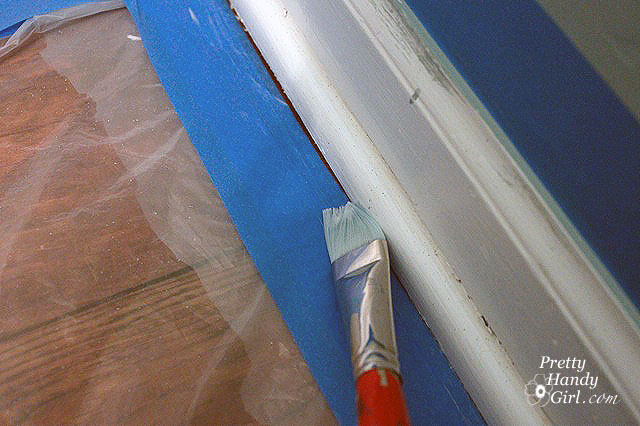



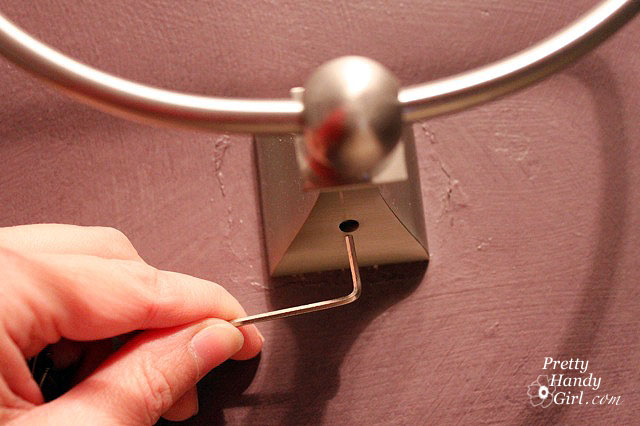
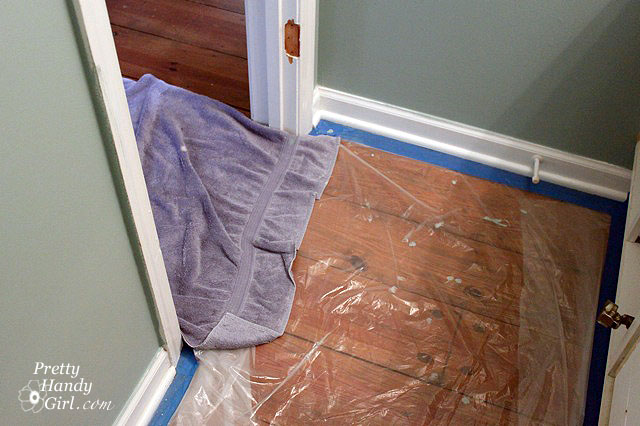
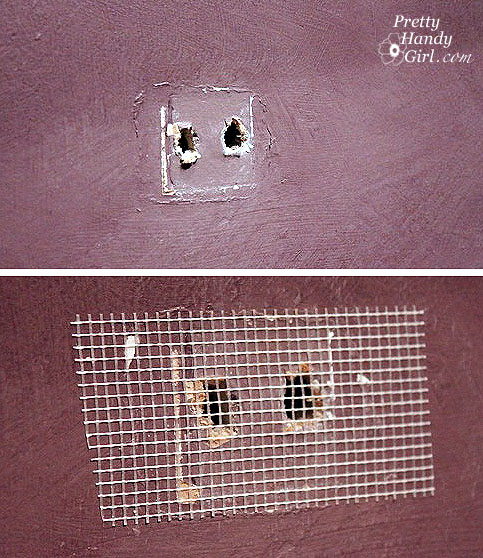
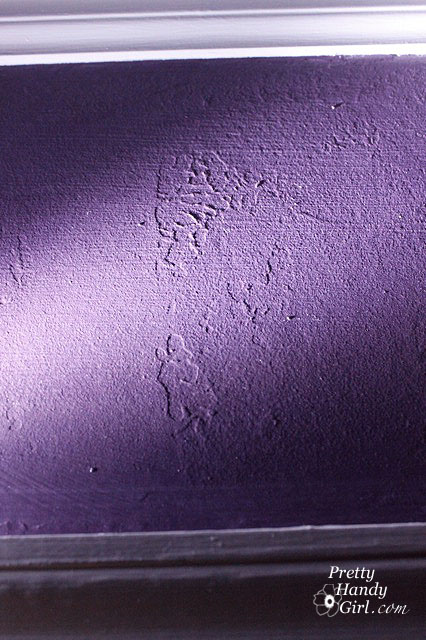

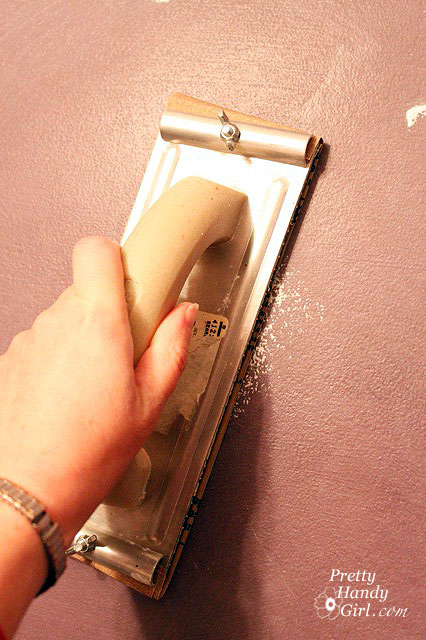
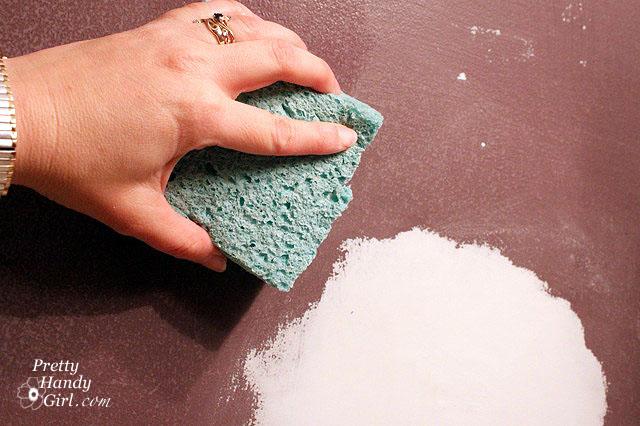
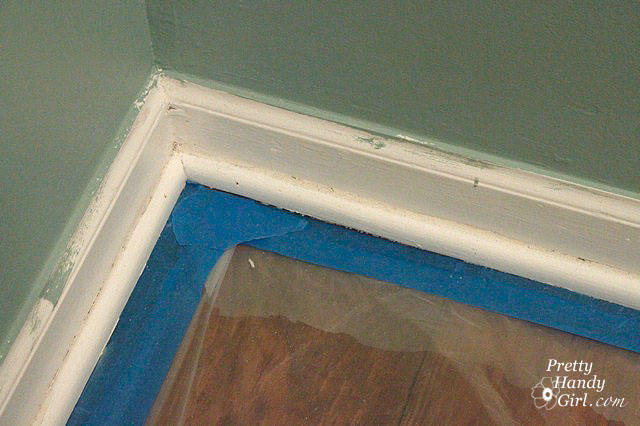
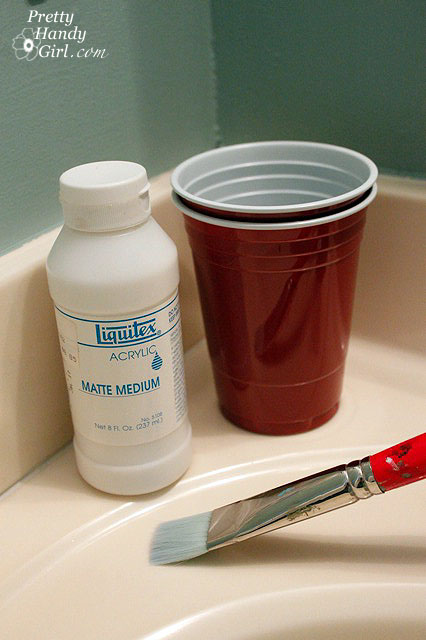
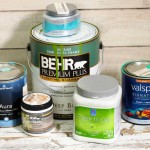

Hi Brittany! I love your site! Go Girls!!!
Quick question: I just had my entire lower level painted and the contractors used flat paint : (
Without going back over all of the paint with eggshell or satin paint is there some type of sheen I can buy to cover the walls? I have noticed marks already and this will not be easy to clean… or do you recommend doing something else?
Thanks so much!
I’ve just discovered your blog and so far I’ve loved your posts. Quick question tho, I’m getting ready to paint a small bathroom about the same size as yours but the current paint finish is semi-gloss. Do you have any tips, advice on how to prep a room with semi-gloss paint? I bought a few paint samples to test out the color but I could already see the paint won’t adhere well to the wall which would require a couple of coats of extra paint just to get a full coverage. I cleaned the area well but did not think about sanding the wall since I have orange peel and thought it wouldn’t make a difference. Any advice?
Hi Gaby, nice to meet you. Hmm, here are some thoughts I have. 1. Sample paints are usually flat and inexpensive paint, so it lacks the coverage and quality of a good wall paint (my favorite is Benjamin Moore Aura Spa & Bath). 2. The walls may need a good cleaning especially if the paint is old or moisture has built up in the room. Use TSP (tri sodium phosphate) per the instructions on the box to clean the walls. 3. Make sure the paint is latex and not oil (very unlikely). Use a cotton ball or q-tip dipped in rubbing alcohol. If the paint comes off on the cotton when rubbing on the wall it is latex paint. If the paint won’t come off even with a alcohol soaked cotton, it is oil paint and you’ll need to use a good primer first. I highly doubt this 3rd thought is true, but better to test it now than paint the whole room.
Thanks for the quick reply. I’m sure the samples are latex tho I should have asked since it doesnt say on the bottles. I think the problem is that its old paint and mositure build up. That bathroom has never had good circulation and there’s been mold before. I was reading your tips for paint sheen, what sheen do you recommend for a problematic bathroom as mine?
If you go with the Benjamin Moore Aura Bath & Spa paint you can use the matte sheen! But, if you choose another brand I’d go with a satin or semi-gloss for easier cleaning and resisting moisture.
When we had our living room professionally painted a few years ago, the painter sealed the junction of the wall/ceiling and the wall/trim with a small line of caulk. It looked so much nicer when finished than did the bathroom I had painted myself. I am now painting some built-in bookcases. My husband doesn’t think that little caulk line is necessary; what’s your opinion?
Karen, simple question for you to ask your husband, “Honey, do you want it to look like a professional painted it room or like we DIYed it?” Yes, I definitely think adding new caulk if there is none or the existing caulk is cracked is necessary. Without it, you’ll see a dark line where the trim is. Or will over time as the trim expands and contracts. Be sure to use paintable caulk. 😉